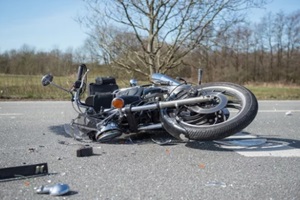 Motorcycles are preferred by many for their maneuverability, trendy designs, and smaller footprint compared to cars and trucks. However, these same features can contribute to a greater risk to the driver in the event of an accident in the absence of the protective cage that surrounds drivers of enclosed vehicles.
Motorcycles are preferred by many for their maneuverability, trendy designs, and smaller footprint compared to cars and trucks. However, these same features can contribute to a greater risk to the driver in the event of an accident in the absence of the protective cage that surrounds drivers of enclosed vehicles.
Motorcycles are often more difficult to see on the road, and those riders who lane split are at increased risk of collision with another vehicle. Motorcycle operators in California must fully understand the practice of lane splitting, its legality in California, and the role it plays in motorcycle accidents.
Here is an overview of how lane splitting is designed to work and how it contributes to accident risk and liability according to a Los Angeles motorcycle accident lawyer.
What Is Lane Splitting?
Lane splitting is the practice of driving a motorcycle between defined lanes of traffic moving in the same direction. The motorcycle operates within the space near the dividing line between lanes, with vehicles passing on either side.
Lane splitting is typically only done for short periods, such as when a motorcycle drives between two stopped lanes in order to make forward progress before merging back into one lane and continuing in the flow of traffic.
Lane splitting can only be done on roads with at least two lanes moving in the same direction; it does not refer to passing on the left on a two-lane road.
Is Lane Splitting Legal?
In the U.S., California is the only state in which lane splitting has been legalized. In California, Vehicle Code 21658.1 VC governs the practice of lane splitting in California, but it does not stipulate a maximum allowable speed during lane splitting.
Thus, a motorcyclist may lane split on roads regardless of the speed limit. However, just because lane splitting is legal does not mean that it is safe or that it does not contribute to vehicular accidents.
Does Lane Splitting Contribute to Accidents?
 In short—lane splitting does not necessarily change the rate at which accidents occur. Instead, it changes what types of accidents motorcycles are more commonly involved in.
In short—lane splitting does not necessarily change the rate at which accidents occur. Instead, it changes what types of accidents motorcycles are more commonly involved in.
For instance, while motorcyclists who are lane splitting are less likely to be rear-ended by another vehicle (by approximately 50%), they are more than twice as likely to be responsible for rear-ending another driver. In this way, we can say that lane splitting contributes to different types of motorcycle accidents than in-lane driving does.
However, one of the most critical elements of lane splitting is how other drivers react. When surveyed, 61% of California drivers did not view lane splitting favorably, and as a result, they were more likely to drive defensively around motorcycles that engage in the behavior.
This can include hugging the lane divide to prevent motorcycles from splitting or even opening their car doors to serve as a blockade. As a result, motorcyclists can be injured due to the behavior of other drivers when lane splitting.
Who Is Liable in a Lane Splitting Accident?
California is a strict comparative negligence state. This means that each party can be partially responsible for an accident with the court determining who is at fault by percentage.
Because lane splitting is legal, it does not impact the assignment of liability; the factors of the case will be determined as in any other vehicular collision.
The motorcyclist may be found to be partially at fault if they were lane splitting in a vehicle’s blind spot or if they engaged in other problematic behaviors, such as speeding, driving erratically, or failing to utilize their turn signals.
However, the other vehicle may be partially or fully at fault if it interfered with the motorcyclist’s legal lane-splitting behavior, such as by brake-checking the driver or attempting to stop the motorcycle from passing them.
 The details of the case will determine the court’s assignment of fault, and by extension, the possible monetary recovery. An individual may only recover the value of the damages for which they were not at fault; for example, if the court determines that they are 60% responsible, they can only recover 40% of the total value of damages.
The details of the case will determine the court’s assignment of fault, and by extension, the possible monetary recovery. An individual may only recover the value of the damages for which they were not at fault; for example, if the court determines that they are 60% responsible, they can only recover 40% of the total value of damages.
Get Legal Help with Your LA Lane Splitting Accident Case
If you have been involved in an accident with a motorcycle while lane splitting, it is important to seek legal representation as soon as possible after the accident. An attorney can assist you in compiling evidence and mitigating the attribution of negligence.
The team at Lehr Law assists motorcyclists in defending their rights when a collision occurs. Contact Lehr Law to share the details of your case and learn what to do next.
